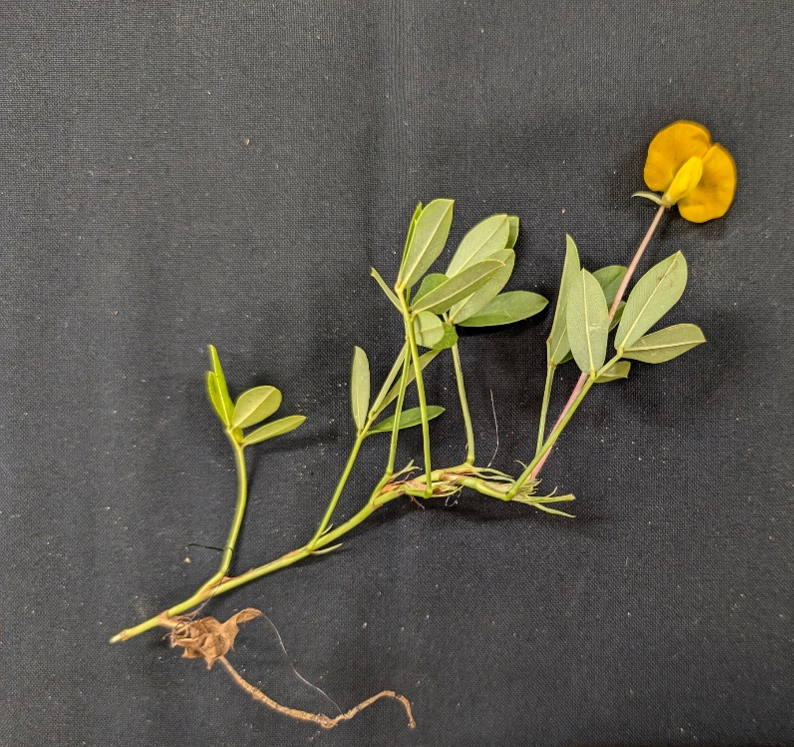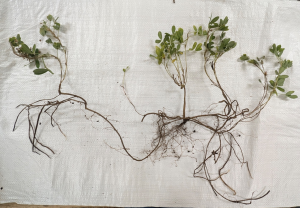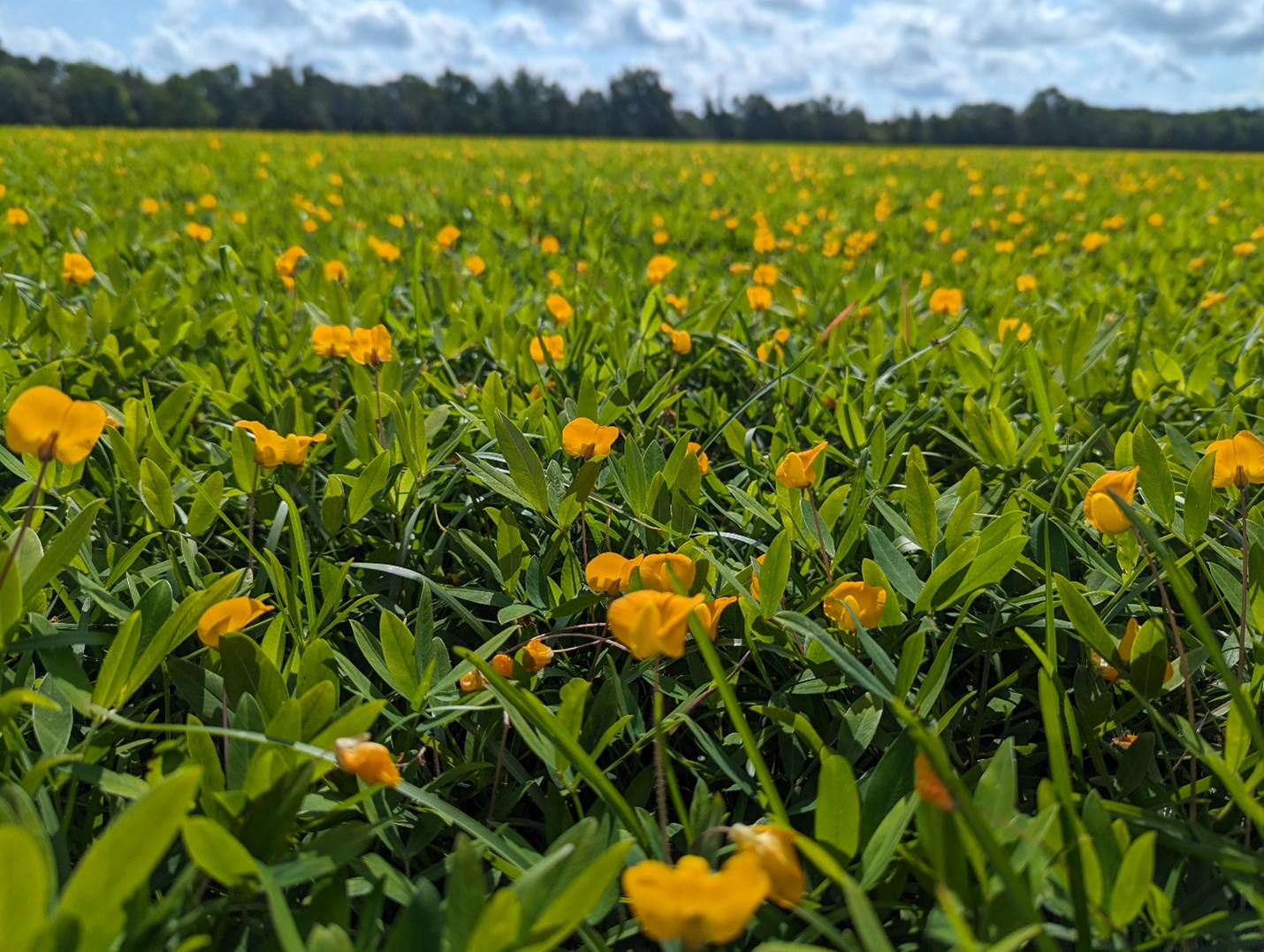- Indoor Plant Care 101 - December 18, 2024
- Thinking about a “Clover Lawn”? We live in Florida; you can do better!! - October 24, 2024
The trend of having a clover lawn, or sometimes called a “fairy” lawn, has gained popularity in the last years. The trend has gained fame as homeowners are more conscientious about the environmental impact of their gardening decisions.
A turfgrass lawn usually requires many inputs to perform at it best: irrigation, fertilization, and regular maintenance (mowing, weed control, etc.). Let’s be clear, turfgrass lawns are not “bad” for the environment per se. In fact, they provide multiple benefits: they control erosion; help with water infiltration; prevent storm water run-off; they reduce noise; and they capture carbon (CO2) from the atmosphere. What gives turfgrass lawns a bad reputation is all the external inputs needed for them to look well maintained and aesthetically pleasing. That is why clover lawns have gained some popularity.
Clover – because of its growth habit – does not require constant mowing. It is also a legume, and as all legumes do, fixes nitrogen into the soil (we may say it produces its own nitrogen fertilizer). Plus, it will have all the other benefits of a turf lawn, or any other plant ground cover: erosion control, water infiltration, storm water control, noise reduction, and CO2 capture into the soil.
There is a superior legume (in my opinion) that can be used as a lawn alternative that unfortunately only grows in warm semi-tropical and tropical climates. But I have good news for you: If you are a Florida resident, you do live in a subtropical or tropical climate!
I am talking about Ornamental Rhizome Perennial Peanut.

Ornamental Rhizome Perennial Peanut. Photo by Dr. Leynar Leyton, UF/IFAS Ornamental Plant Breeder and Assistant Professor in Environmental Horticulture.
Ornamental Rhizome Perennial Peanut, it is a legume with far superior ornamental and growing habit characteristics than clover. You might be surprised by this statement, as you might heard – or seen- many bad examples of perennial peanut lawns, which give Ornamental Rhizome Perennial Peanut a bad reputation. First, we need to understand that not all peanut plants are the same. Perennial peanut it is not the same peanut that is used for peanut butter or boiled peanuts. Although both are members of the same genus (Arachis) they are different species. Annual peanut (the one that produces peanuts) is Arachis hypogaea. In contrast, perennial peanut does not produce peanuts, and it is a perennial plant (it does not have to be planted each year).
Perennial peanut can be either Arachis glabrata or Arachis pintoi. These two species may look similar, but they are very different. Arachis pintoi, sometimes referred as ‘Pinto peanut’ is a stoloniferous species, which means it produce ‘runners’. Arachis glabrata, in the other hand, produces rhizomes. Rhizomes are underground ‘root’ like structures that store ‘food’ (carbohydrates or starch). I am sure you have seen rhizomes before; some examples include ginger, bamboo, and mint. This is a key difference between Arachis pintoi and Arachis glabrata.

Rhizomes in rhizome perennial peanut (Arachis glabrata). Photo by Dr. Leynar Leyton, UF/IFAS Ornamental Plant Breeder and Assistant Professor in Environmental Horticulture.
The rhizomes of Arachis glabrata give it an outstanding characteristic: drought resistance. Once Arachis glabrata gets established, and the rhizomes have had time to store nutrients and starch, the plant can resist long periods of drought. This does not mean that the plants will look ‘perfect’ under long periods of drought, but that it will survive and come back after it gets water again. The stoloniferous types (Arachis pintoi) lack the drought resistance, although they can be somewhat drought tolerant, but they will tolerate some flood conditions.
Another important characteristic to look for in Ornamental Rhizome Perennial Peanut is the cultivar that you are buying. There are many forage types of rhizome perennial peanut, and you do not want those. Forage types are “taller”, between 6 to 18 inches tall, and were selected for their ability to produce biomass. Ornamental cultivars of rhizome perennial peanut are much smaller (less than 4 inches tall). That is why I have been intentionally calling it “Ornamental Rhizome Perennial Peanut”. That is the key to have a beautiful perennial peanut lawn: using a rhizome, ornamental type of perennial peanut. Rhizome Perennial Peanut performs better in full sun, and in well drained soils. In heavier soils, rhizome perennial peanut will grow at a lower rate. And rhizome perennial peanut already grows a bit slower for the liking of some people (let’s remember that rhizome perennial peanut plants are not only growing green leaves above ground, but also storing nutrients and starch into the rhizomes underground). In average, rhizome perennial peanut will grow about 6 inches per growing season with good growing conditions. This is an important consideration when you establish rhizome perennial peanut. Rhizome perennial peanut also produces beautiful orange flowers, that attract pollinators.
 Ornamental Rhizome Perennial Peanut A. glabrata ‘Ecoturf’ in North Florida. Picture by Dr. Leynar Leyton, UF/IFAS Ornamental Plant Breeder and Assistant Professor in Environmental Horticulture.
Ornamental Rhizome Perennial Peanut A. glabrata ‘Ecoturf’ in North Florida. Picture by Dr. Leynar Leyton, UF/IFAS Ornamental Plant Breeder and Assistant Professor in Environmental Horticulture.
One of the most popular cultivars of Ornamental Rhizome Perennial Peanut are ‘Ecoturf’, ‘Cowboy’, ‘Waxy Leaf’ and ‘Needlepoint’. You might see ‘Golden Glory’ sometimes described as a rhizome type, but it is not. ‘Golden Glory’ is a stoloniferous type (Arachis pintoi) and it does not perform well. Our UF/IFAS Ornamental Perennial Peanut Breeding Program will release some new varieties of Ornamental Rhizome Perennial Peanut soon, but I’ll tell you more about that in the upcoming months. Stay tuned!
